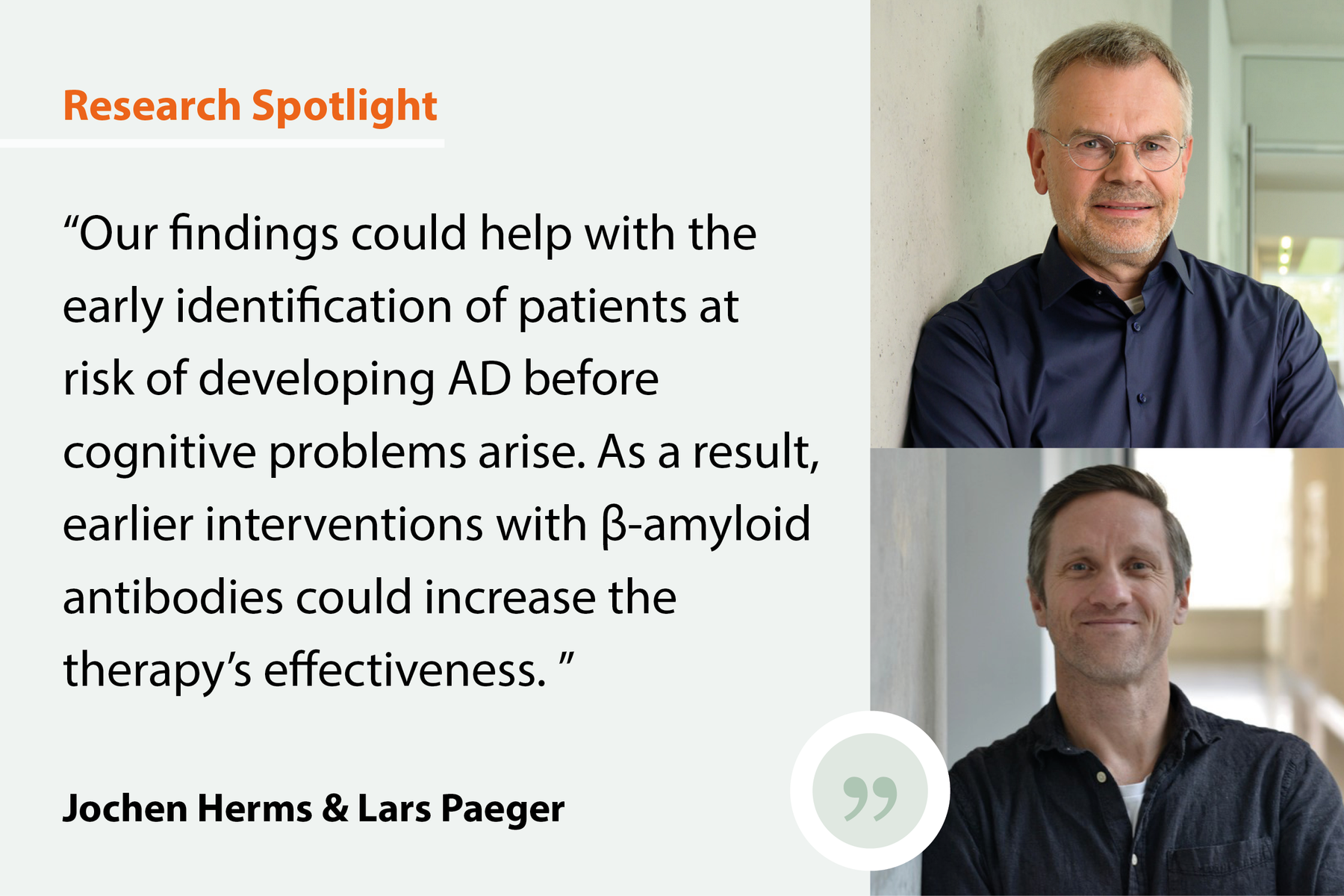This is a summary Meyer, C., Niedermeier, T., Feyen, P.L.C. et al. Early Locus Coeruleus noradrenergic axon loss drives olfactory dysfunction in Alzheimer’s disease as published in Nature Communications 16, 7338 (2025). https://doi.org/10.1038/s41467-025-62500-8
The challenge
Alzheimer’s disease (AD) often begins with unspecific non-cognitive symptoms, such as sleep alterations or sensory deficits, including smell issues. Smell issues in AD and related damage to the associated nerves have been discussed for some time. We know that the brainstem locus coeruleus (LC), which is the main source of the neurotransmitter noradrenalin that is involved in sensory processes such as smell, is affected early. However, if LC dysfunction contributes to smell deficits was unknown.
Our approach
We chose a multifaceted approach to study the neural correlate of olfactory dysfunction in a mouse model of amyloidosis using several steady-state systems neuroscience techniques, both ex vivo and in vivo. Furthermore, we studied human post-mortem brain tissue to validate our mechanistic findings.
Our findings
We found that olfactory dysfunctions arise as a result of the loss of noradrenergic axons in the olfactory bulb. This fiber loss was the result of a microglia-dependent removal of LC axons in the OB. More specifically, phosphatidylserine – a fatty acid that usually occurs inside a neuron’s membrane – had moved to the outside of the altered axons. This shift of membrane composition signals to the microglia that the affected fibers are defective or superfluous, resulting in microglia removing them.
The implications
Our findings could help with the early identification of patients at risk of developing Alzheimer’s before cognitive problems arise. As a result, earlier interventions with β-amyloid antibodies, which could improve cognitive decline symptoms, could increase the therapy’s effectiveness.
Creating SyNergies
The study was co-led by our member Jochen Herms and by Lars Paeger from DZNE. The research team includes our members Robert Perneczky, Jonas Neher, and Matthias Brendel. LMU University Hospital (Brendel/Perneczky) contributed significant imaging data and results from sniffing tests, while Jonas Neher contributed with his knowledge on microglia and MFG-E8. We will further continue and explore which olfactory domains are specifically impaired in mice with the ultimate aim to refine sniffing tests for a first easy assessment of olfactory function in humans.

